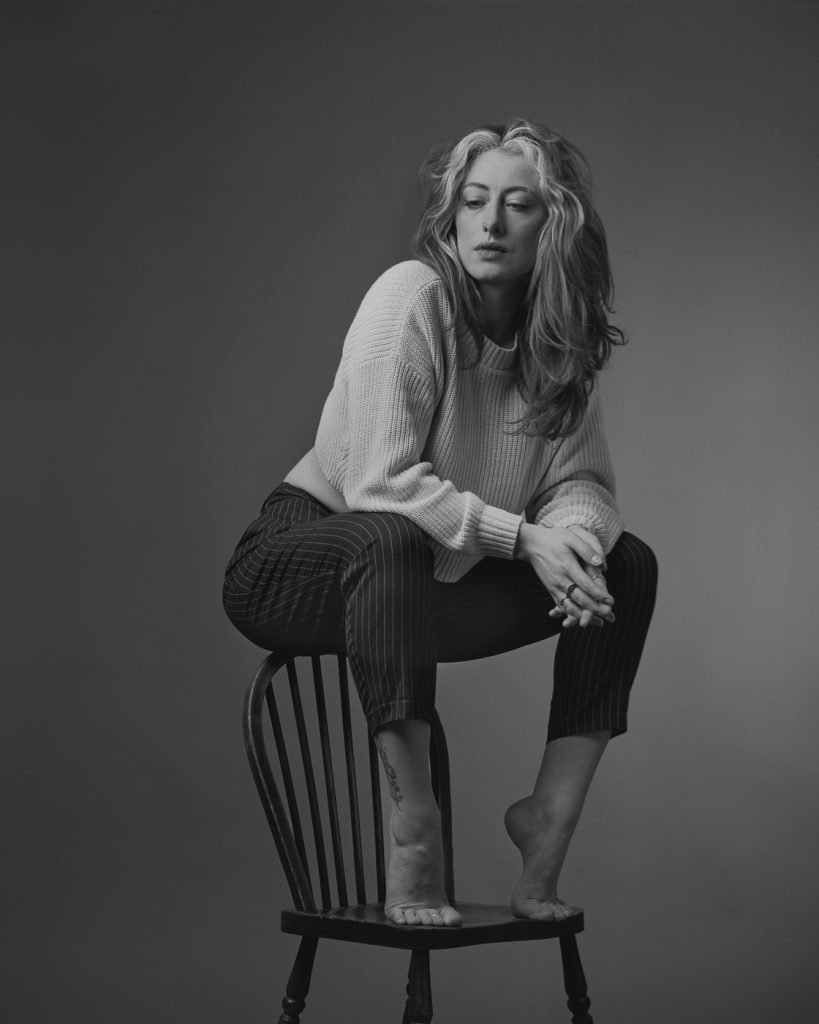After spending the winter months shooting corporate headshots I felt the urge to do something a bit different. So I decided to book some studio space and shoot some portraits with my large format camera. Working with this big old camera always gets my creative juices flowing, and I soon set about creating mood boards, working out light set ups and emailing my model more than is really necessary!
Shooting with an old camera always gives you a few problems to overcome. Not least the fact that the studio and its equipment was set up for radio triggers and I have long preferred to use a PC cable when shooting my old cameras. I do this because that was how the lenses were designed to work, with a pc socket built in the side of them. No 4×5 camera has an integrated hotshoe. This means to use a trigger that I have to use a small adaptor cable and rest the trigger precariously somewhere on the camera. More often than not you forget the trigger is there and it will drop on to the hard concrete floor when you decide to move the camera. It is just easier to use a simple PC cable to connect one head and trigger the rest optically, rather than risk damaging someone else’s equipment. In the end, I decided to bring my own equipment, even of it largely duplicates what is in the studio. I am familiar with it. I know what it will do and what it won’t do, and ultimately this saves me time. This turned out to be the right decision as the studios lights did not have the right socket to fit my leads, and I saved myself quite a lot of grief.
Then there is the issue of power. To equal the depth of field of a full frame shot, you have to stop down a 4×5 lens 3 or 4 stops. So f2.8 becomes f11 and you need around 400% more flash power. I have some old Bowens Esprit 500’s and while these are not high tech, they do kick out just about enough light at full power to give me f22 through a softbox if I need it with 100 iso film. To be comfortable though, it’s easier to shoot with 400 film and have a bit of headroom.
With Polaroid for 4×5 effectively a distant memory, I set up my shots with a digital camera and then check the settings with my light meter before transferring them on to my film camera. I pay particular attention to shadow areas, set those (usually a stop or two below mid grey) and build the exposure from there. The latitude in negative film is all in the highlights so this has always worked well for me.
The speed at which you work is deceptive. I always feel like a sense of urgency with large format. The camera is slow to set up and I am very conscious of the fact that I have a sitter in front of me waiting to be photographed. If I don’t have an assistant to stand in while I am setting up, I make a point of letting my sitter take frequent breaks so that they stay relaxed, and I try to be very clear in terms of direction to compensate for the fact that I am not taking 100’s of shots to get one good one.
My large format work always come of the back of a lot of planning. I create mood boards, work out lighting set ups and arrive on set with some clear ideas ready. That is not to say that I don’t improvise and vibe off of the people I am working with, but I really don’t like showing up without a plan of some sort.
For this shoot I loaded my camera with sheets of Delta 100. I loved the smooth tonality of the film and would definitely use it again, but I definitely felt I was lacking a little flash power even though I had four 500w heads to call upon. So I would still shoot HP5 and take that extra film speed if I was in a situation where I absolutely had to get the shot.
